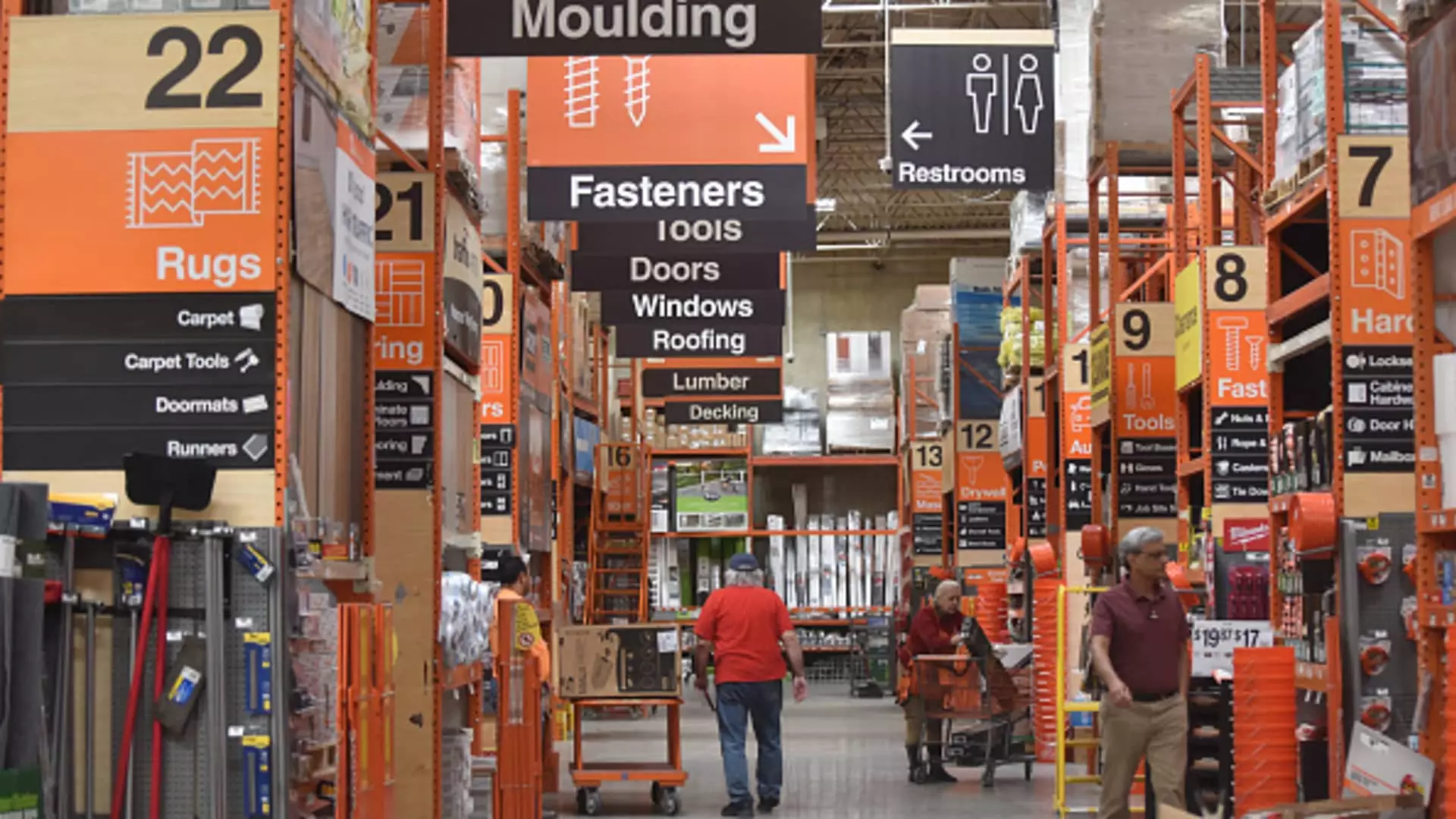Home Depot, a leading player in the home improvement retail sector, recently reported its quarterly financial results, revealing a performance that exceeded analysts’ expectations. For the three-month period ending on October 27, the company’s net sales climbed 6.6% year-over-year, reaching $40.2 billion, surpassing predictions that estimated $39.3 billion. Additionally, despite a slight decrease in adjusted earnings per share (EPS), which dropped by 1.8% to $3.78, the figure still outperformed the anticipated $3.64 per share. These promising numbers are a signal that Home Depot is positioning itself for a potential earnings rebound as it nears the end of 2024 and looks towards 2025, despite the clouds of high interest rates and economic uncertainty hanging overhead.
Resilience in Same-Store Sales Performance
The company’s same-store sales, a crucial metric that evaluates performance by excluding new store openings, fell by 1.3% overall and 1.2% within the U.S. These results, while down from the previous year, were more favorable than the expected declines of 3.1% and 2.9%, respectively. Such resilience in the face of adversities indicates a capacity for recovery and suggests that Home Depot might be slowly regaining consumer confidence, helping them to navigate through challenging economic waters.
In a statement from CEO Edward Decker, hope was expressed regarding the current state of the business. October saw an uptick of 1.4% in sales, indicating a trend of month-on-month improvement as weather conditions normalized. This supports the idea that Home Depot may be poised for an uptick in sales as consumer engagement increases, particularly in seasonal categories and outdoor projects.
It’s worth noting that external factors, such as weather events, had a significant impact on Home Depot’s recent sales performance. The storms and hurricanes earlier in the summer led to increased demand for home improvement products, proof of how external conditions can influence retail performance. However, the company also acknowledged ongoing challenges, particularly concerning larger remodeling projects, which have been constrained by higher interest rates and broader economic anxiety.
Nevertheless, signs of improvement for these larger renovation projects are emerging. With home equity lending rates decreasing as the Federal Reserve adjusts its monetary policy, homeowners may find it increasingly attractive to pursue significant renovations or improvements, benefiting retailers like Home Depot in the long run.
Looking ahead, management at Home Depot has modified its guidance for the remainder of the fiscal year. Total expected sales have been revised upwards to a growth rate of 4%, an improvement from the previous estimates of 2.5% to 3.5% growth. Similarly, the forecast for same-store sales has been upgraded to an anticipated decline of only about 2.5%, a positive shift from an earlier forecast projecting a decline of 3% to 4%.
These adjustments reflect not only the improvements in their sales performance but also confidence in their operational aspects, including anticipated contributions from the recently acquired SRS Distribution. This addition is expected to generate around $6.4 billion in incremental sales, further solidifying the outlook for Home Depot.
For those investing in Home Depot, the overall picture remains cautiously optimistic. The company continues to navigate through headwinds in the economy, but the recent results and strategic adjustments indicate readiness for a potential rebound. With the Federal Reserve’s anticipated interest rate cuts, many believe that a revival in the housing market isn’t far-fetched, which would further bolster Home Depot’s position in the retail space. It also seems prudent for investors to keep a close eye on the trends within the housing market, given that Home Depot’s performance is closely tied to housing dynamics.
While challenges such as rising interest rates and economic uncertainty persist, Home Depot’s latest results suggest a turning tide. Thus, as we move into 2025, the retailer appears poised for a rebound, offering a compelling case for maintaining or even increasing investment in the company.

